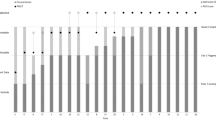Abstract
The gold standard for identification of the dead is the visual dental record. In this context, several authors emphasize computed tomography (CT) as valuable supportive tool for forensic medicine. However, studies focusing on diagnostic accuracy of post-mortem computed tomography (PMCT) are still missing. Therefore, the aim of this study was to compare diagnostic accuracy of the visual dental record and post-mortem computed tomography (PMCT) of the dentition for identification of the dead. Ten whole skulls were included into the study. The entire dentition of each skull was first examined with the visual dental record as a gold standard and second using dental PMCT scans, performed on a 64-multi-detector CT (MDCT). 3D reformations, multi-planar reformations (MPR), and CT–orthopantomography (OPG) were performed in the post-processing. All examinations were analyzed by three independent investigators regarding the criteria for identification of the dead, e.g., in case of disaster. PMCT for the dental identification of the dead was difficult to perform and time consuming. Due to dental overlays and corresponding artifacts, the definite periphery of the dental fillings/inlays was not accurately defined resulting in 2.9% incorrect and 64.1% false negative findings, especially synthetic inlays were hardly or not recognizable at all. For the identification of the dead especially in case of disasters with large numbers of victims, the visual dental record is still to be considered the gold standard. In the identification process itself, there is no room for error at all, although some non-concordant information may occur. Thus, PMCT should only be performed for identification in individual cases due to the relatively high error rate.






Similar content being viewed by others
References
Hayakawa M, Yamamoto S, Motani H, Yajima D, Sato Y, Iwase H (2006) Does imaging technology overcome problems of conventional post-mortem examination? Int J Leg Med 120:24–26
Dedouit F, Telmon N, Costagliola R, Otal P, Florence LL, Joffre F, Rougé D (2007) New identification possibilities with post-mortem multislice computed tomography. Int J Leg Med 121:507–510
Rutty GN, Boyce P, Robinson CE, Jeffery AJ, Morgan B (2008) The role of computed tomography in terminal ballistic analysis. Int J Leg Med 122:1–5
Benthaus S, DuChesne A, Brinkmann B (1998) A new technique for the post-mortem detection of tooth coloured dental restorations. Int J Leg Med 111:157–159
DuChesne A, Benthaus S, Teige K, Brinkmann B (2000) Post mortem orthopantomography—an aid in screening for identification purposes. Int J Leg Med 113:63–69
Thali MJ, Markwalder T, Jackowski C, Sonnenschein M, Dirnhofer R (2006) Dental CT imaging as a screening tool for dental profiling: advantages and limitations. J Forensic Sci 51(1):113–119
Schuller-Gotzburg P, Suchanek J (2007) Forensic odontologists successfully identify tsunami victims in Phuket, Thailand. Forensic Sci Int 171(2–3):204–207
Sidler M, Jackowski C, Dirnhofer R, Vock P, Thali M (2007) Use of multislice computed tomography in disaster victim identification—advantages and limitations. Forensic Sci Int 169(2–3):118–128
Jackowski C, Aghayev E, Sonnenschein M, Dirnhofer R, Thali M (2006) Maximum intensity projection of cranial computed tomography data for dental identification. Int J Legal Med 120(3):165–167
Paewinsky E, Pfeiffer H, Brinkmann B (2005) Quantification of secondary dentine formation from orthopantomograms—a contribution to forensic age estimation methods in adults. Int J Legal Med 119(1):27–30
Abrahams JJ (2001) Dental CT imaging: a look at the jaw. Radiology 219(2):334–345
Fixott RH (2001) How to become involved in forensic odontology. Dent Clin North Am 45(2):417–425
Gahleitner A, Watzek G, Imhof H (2003) Dental CT: imaging technique, anatomy, and pathologic conditions of the jaws. Eur Radiol 13(2):366–376
Jackowski C, Lussi A, Classens M, Kilchoer T, Bollinger S, Aghayev E, Criste A et al (2006) Extended CT scale overcomes restoration caused streak artifacts for dental identification in CT-3D color encoded automatic discrimination of dental restorations. J Comput Assist Tomogr 30(3):510–513
Jackowski C, Wyss M, Persson A, Classens M, Thali MJ, Lussi A (2008) Ultra-high-resolution dual-source CT for forensic dental visualization—discrimination of ceramic and composite fillings. Int J Leg Med 122(4):301–307
Author information
Authors and Affiliations
Corresponding author
Additional information
S. Kirchhoff and F. Fischer contributed equally to this work.
Rights and permissions
About this article
Cite this article
Kirchhoff, S., Fischer, F., Lindemaier, G. et al. Is post-mortem CT of the dentition adequate for correct forensic identification?: comparison of dental computed tomograpy and visual dental record. Int J Legal Med 122, 471–479 (2008). https://doi.org/10.1007/s00414-008-0274-y
Received:
Accepted:
Published:
Issue Date:
DOI: https://doi.org/10.1007/s00414-008-0274-y




